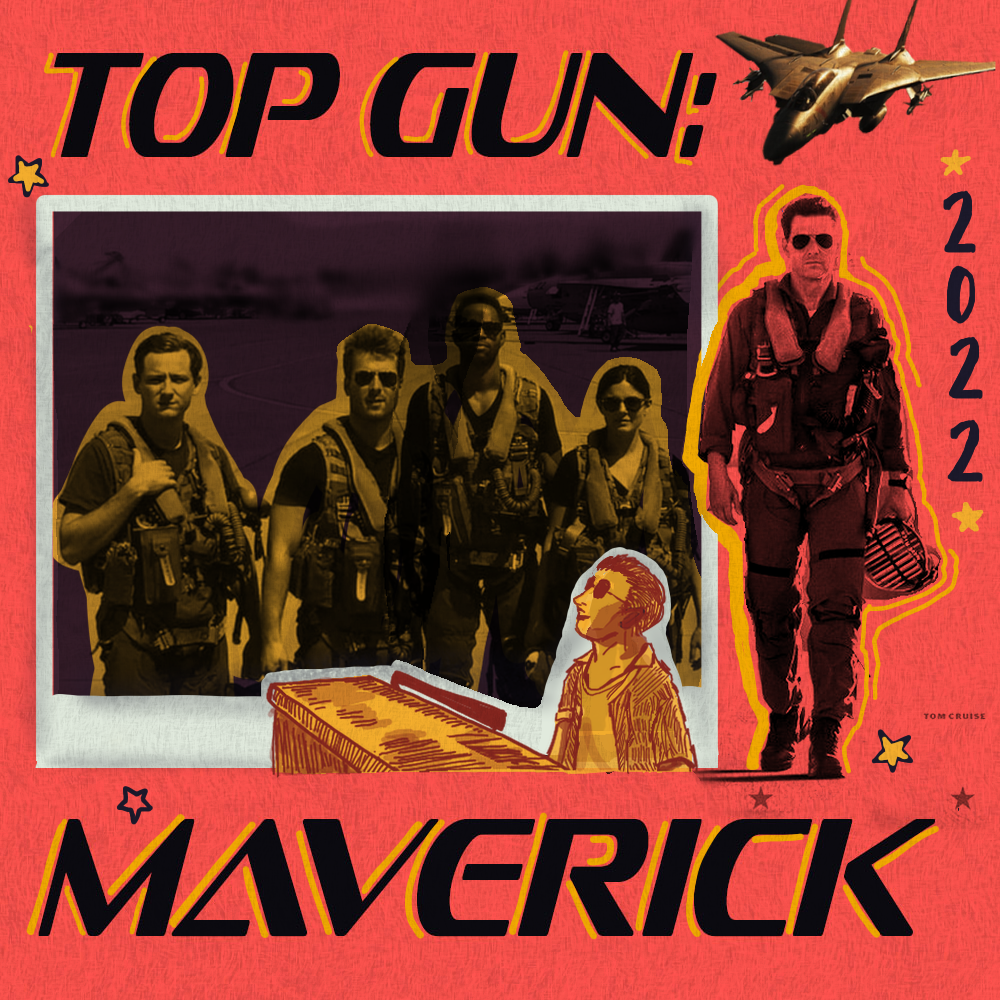Please visit response.fsu.edu for official FSU updates and resources.
Top Gun: Maverick is a Reference Point for Sequel-Making Magnificence

Thirty-six years after the first film, audiences had the opportunity to bundle into theatres to view Top Gun: Maverick, the long-awaited sequel to 1986’s Top Gun. Reaching Mach-10, the action sequel hauled in more than a billion dollars at the worldwide box office and became the global blockbuster of the year. Many directors and studios generally shy away from sequels for the simple fact that they are difficult to make. Recapturing the lightning in a bottle success of a first film is tough. However, building on a first installment’s foundation to meaningfully explore different stories and new characters is even more challenging. Top Gun: Maverick proves that this laborious task is achievable. Revisiting the Goose-Maverick relationship at its heart, making callbacks to fan-favorite moments from the original, and displaying the soaring technological advancements made during its lengthy absence, Top Gun: Maverick leaves audiences mesmerized.
This sequel, directed by Joseph Kosinski, emblematically looks at Captain Pete ‘Maverick’ Mitchell’s (Tom Cruise) progression after 30 years as a Navy test pilot. After a surprise request to return to the U.S. Navy-Fighter Weapons School, TOPGUN, the aviator is tasked with preparing a special group of graduates for a near-impossible mission. The film also stars Jennifer Connolly, Jon Hamm, Ed Harris, Miles Teller, Glen Powell, Jay Ellis, and Greg Tarzan Davis, with Val Kilmer reprising his role as Tom “Iceman” Kazansky. Scored by the renowned Hans Zimmer and Lorne Balfe, the second billing is inclusive of emotional ballads from Lady Gaga and the iconic ‘Top Gun anthem’ from the original film.
Top Gun: Maverick was filmed primarily in San Diego, California in 2018. The megahit saw filmmakers capturing over 800 hours of footage, or effectively the total of three Lord of the Rings films combined. After a slew of CGI-heavy blockbusters in recent years, Maverick set out to break the mold by electing for practical effects and dexterous camera work as suited alternatives. Utilizing the specially developed and revolutionary Sony Rialto Camera Extension System, Kosinski was able to place six 6k Venice cameras alongside actors in the cockpits of real F-18 Super Jets. Uniquely, with the F-18 generally being too small for a film crew, actors portraying pilots had the grueling tasks of learning lighting and videography to efficiently operate the camera set-ups once in flight. Cruise, who worked also as a producer on the film, developed a three-month boot camp to help the film’s new generation of actors build spatial awareness, get acquainted with the aerobatics of flying, and meet the rigorous demands of filming. The results of this investment are mind-shattering visuals and emotional performances, the likes of which could never be achieved with the use of CGI.
Reaching international success, Top Gun: Maverick is a reference point for sequel-making magnificence. The feature delivers visual spectacle, emotional poignancy, and relentless action in a 132-minute cinematic showcase designed for mass theatrical appeal. With a new fleet of A-list pilots eager to take on the uncertainties and dangers of the Top Gun skies, the feature reminds us that there are ‘no points for second place.’ If Top Gun (1986) was a love letter to aviation, then Maverick is certainly a love letter to audiences and to cinema. With heightened stakes, more diverse casting, new conflicts, past emotions, and a mission that demands the ultimate sacrifice from those who choose to fly it, the follow-up achieves what any sequel should set out to. By keeping audiences on the edge of their seats and bone-crushingly surpassing the original film, Top Gun: Maverick provides a reference for sequel-making, for Hollywood studios and moviegoers alike.
Written by Shawn the Writer
Art by Isabella Limbo



